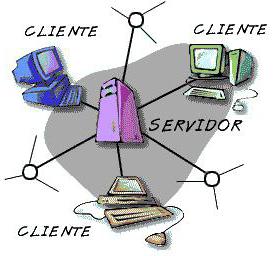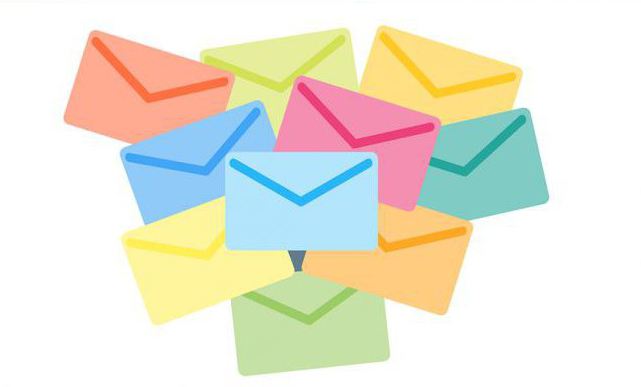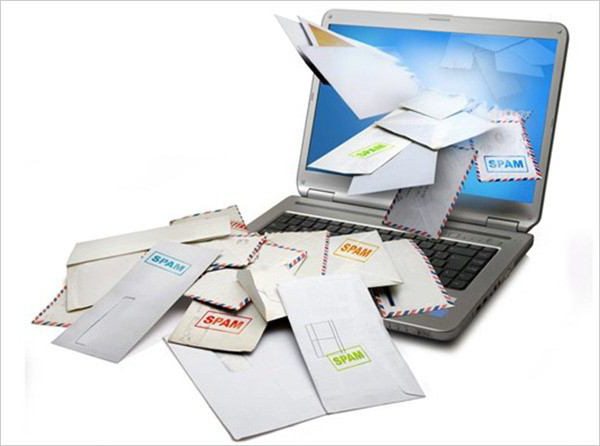Surely, the so-called "letters of happiness" from network operators, providers or electronic stores have repeatedly come to you. In most cases, you immediately disposed of them, set up anti-spam, and disowned you in every way. To the question of what the newsletter is, everyone will answer differently, but hardly positively. Thus, the easiest and most affordable way of advertising has turned into an annoying woodpecker that “hits the top of the head” of a potential consumer. A logical question arises: "How to disable the newsletter?"
What do we see?
Try not to check your mail for a couple of weeks. It is not so important whether you use the Internet for correspondence or, as usual, write letters manually. In a week, your real inbox will begin to swell with all kinds of flyers, handouts, free newspapers and discount coupons. But if a regular mailbox has a limit, then a virtual analogue can be "cluttered" almost forever. Over a week, more than a hundred letters will accumulate there, and only a couple of them will be really important and interesting to you. But the rest of the contents of the box answers the question of what the mailing list is. These are letters with the same information sent to a large number of users at the same time. Sometimes they do contain relevant information. For example, information about a new tariff for mobile communications, a sale in a store around the corner, or a future water outage. But, in fact, the newsletter does not give you the necessary information, and therefore you can safely do without it. If you suddenly urgently want to change the tariff, then you will do it yourself, without intrusive prompts from the outside.
Why are they coming?
Why are these unnecessary letters constantly coming? Here the principle of the newspaper is triggered when you have just signed up, and the issues are all coming and going to your address. Usually they come once a week or a couple of times a month. Now imagine that you subscribed to hundreds of newspapers and magazines at once! From such an abundance of income, one can really go crazy. In this case, the author of the mailing list works easier than the editor of the newspaper, because it is enough for him to upload one letter to a special program, which itself will send it to a thousand addresses. This is what the newsletter is. In fact, this is real spam. But receiving newsletters is voluntary. So why do letters come without your expressed consent?
In fact, you may not remember how you agreed. Perhaps in the underwear store you filled out a questionnaire on a discount card and checked the corresponding box. Or maybe they somehow attended a workshop of author's cuisine and there they gave their contacts in the hope of getting a free skillet. In the simplest case, you can search for information on the Internet and wish to receive updates from the site. After such a declaration of consent, an email will be sent to your email inbox, which must be answered, thereby confirming the desire to receive the newsletter. And - voila, your mailbox has been added to the list of site subscribers. Fresh materials will flow to all the addresses on the list.
Candy Subscription
Marketers have long realized that a person is more willing to make contact if they promise him a gift. Let it be sweetie, a book or a short video course. You are asked to indicate the address to which the gift will come. So you are in the base of the site. Now spam mailing is provided to you. The interest of the user is obvious, but the author does not remain with nothing. It is beneficial for him that there are more subscribers, accordingly, the number of visits is growing, the life of the forum is being revived. If a person visits the site once, then he can return, and at the same time buy something. Everything seems to be the winner.But this does not take into account the fact that the newsletter does not always offer what is really interesting to the consumer, but frequent letters can be annoying.
They asked
Particularly often asked questions are people of the older generation who are used to thinking that the letter should contain important information. It is difficult for them to understand what a newsletter is, and difficulties with the term entail difficulties and consequences. For example, is it paid? Yes, there are paid options, but do not panic. Money will not be written off if you just click the "subscribe" button. However, the resource will be incomplete for the user, as some videos or books cannot be viewed until you make a payment. To do this, you need to send SMS or transfer money from the card. Think for yourself if you need such a service.
Is the newsletter safe? In general, yes, since the author of it can only transfer your address to another spammer. This is the maximum of evil actions that can be committed. But this happens very rarely, because the authors of the newsletters do not make sense to lose a potential client.
Can I chat with the mailing list author? There will be difficulties, because a hundred thousand letters may come to the author. Will he be able to answer everything ?!
And here is the logical question: "How to get only the information that interests you?" Alas, no way. The author acts as the first critic and selects materials that are of interest to the majority.
Main question
What should I do if I got a spam mailing list? How to cancel it? To the great joy of many Internet users, any newsletter can be turned off, and the algorithm of actions is similar regardless of the device used. Each letter that comes to your address has a special link with a proposal to remove your address from the subscriber database. If you click it, then the information from the author will no longer bother you. Typically, such a link is at the bottom of the letter. But there are dishonest authors who seek to deprive the consumer of his legal opportunity to remain in ignorance. But in such cases, the mail sites themselves help you. At the very top of the letter there is a "unsubscribe" or "add to spam" button. With one click, you can delete from the author’s database or send it to the black list.
Write me sms
It so happens that you are really waiting for the coveted SMS from your loved one, count the minutes, and here it is - the squeak of the phone. But, alas, there is an SMS distribution. At such moments, I want to smash the phone against the wall. It is especially unpleasant when information comes that is absolutely superfluous in your life. For example, an advertisement for new gaskets that are sold only in a supermarket on the outskirts of the city, where you once drove for water. Unwanted SMS mailing becomes a real disaster for many phone users. Messages come every day, and their number is growing annually. And after all, to stop such an SMS attack is extremely difficult without outside help. It will not work out as easily as with a computer. And through the operator the problem is not always solved. However, you can still unsubscribe. If no one agreed on the newsletter with you, then this is a direct violation of the law, and the author may receive a substantial fine. That is, you have the right to write a statement to the OFAS indicating the violation of the law "On Advertising". But you can do it easier by acting as the authors of the mailing lists. There is a service "SMS is not necessary", which makes it possible to unsubscribe from annoying advertising for free. You will need to fill out a form and send an application. It’s even easier to act on your smartphone, because you can install a free antivirus with the function of detecting phishing and malicious messages there.
There are parallels
There is something in common between phone and email newsletters. In both cases, your nerves may suffer from your own forgetfulness or neglect of your means of communication. Most of the spam gets to your mail of your own free will. And with it all kinds of viruses arrive.If you find it difficult to dramatically change your attitude to all sorts of new products, interesting offers or trial copies, then you will have to learn with time. So, by the way, the spam filter and SMS blocker work. For the phone, this is a highly specialized application that blocks unknown or advertising mailings. The same filter helps clean emails. All blocked messages are sent to a separate folder, where you can later deal with them: delete or "have mercy", that is, return them to the Inbox.
In general, you need to learn to be careful about your messengers. Use spam filters to send emails so you don't spam your inboxes. Do not forget to unsubscribe from those mailings that you no longer need.
For example
Recently, more and more Internet users have been complaining that Yandex is annoying. Two thirds of the mailbox are clogged with all kinds of promotional offers. Regular cleaning does not help. What to do? Maybe you should get rid of the newsletters once and for all? So, go to the mail. On the main page on the left side you will see all the information about messages and your correspondence. Find a small image of a paper clip. This designation is for letters with attachments. And right above the paper clip is the inscription "Customize." Activate. On the left side, a menu of available services will open. Among all sections there will be one with the name "Mail Processing Rules". In this tab, you can work with the addresses from which the newsletter is being sent. If you do not need them, then feel free to send everything to the black list. After this step, all new letters will go straight to the basket, without cluttering up your inbox. You can go the same way if you are fed up with information from other sites or letters from any people.
There is a second way to unsubscribe from the Yandex mailing list. To do this, go to the mail and open the newsletter. Now click on the "Unsubscribe" tab. This method, of course, is easier than others, but it involves repeated operations.
Have contact
Perhaps one of the simplest action algorithms requires sending to the VC. Here it is never imposed, unless your account has been hacked. In all other cases, the newsletter is sent to the VC automatically, because once you yourself wrote in messages to groups or subscribed to notifications. If the information received is no longer relevant, then you can unsubscribe. To do this, in the dialog box with the group, find three points in the upper left corner. The Deny Messages tab appears. Activate it and enjoy the absence of spam.
And what kind of program?
GetResponse, a service with very rich functionality, is one of the three most popular mailing programs. Here you can configure complex conversations, conduct tests and personalize letters. The service is easy to learn, there is a mailing template and technical support in Russian. True, 100% of the deliverability and here are not taken. A month is given for the test. Of the minuses, you need to highlight the price. It is indicated in dollars and jumps absolutely inexplicably.
The second most popular is "Pechkin-mail.ru "is a domestic service, very easy to learn and with a lot of templates. You can send 500 letters a day, and the database of up to 100 subscribers is stored for free. Prices are very, very affordable.
However, technical support is poor, as you can only contact via emails. But the knowledge base is excellent.
Optimal choice
The third most popular, but optimal in terms of the ratio of parameters, program for mailing is MaestroMail. It is much more profitable to pay for the number of letters. So, if you plan to start mailing from your site, then you can start with this program. For 100% of deliverability, they also can not vouch, but they offer a convenient interface, quick response of technical support and advanced functionality of the service.